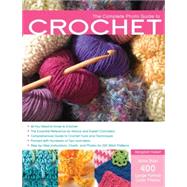Those lovable little creatures received their name from an event that occurred in the fall of 1902. At that time, Theodore Roosevelt was president and his presidential hunting party took a hunting trip to Mississippi. The Washington Post reported that several members of the hunting party lassoed a lean, young black bear and tied it to a tree. The president was summoned, but he refused to shoot the exhausted and frightened bear. He declared that this would be unsportsmanlike and ordered the bear to be released.
The next day, November 2, The Washington Post featured a front-page cartoon showing Roosevelt refusing to shoot the bear. The cartoon showed the president with his back to the animal and his gun before him with its butt resting on the ground. Roosevelt, with an outstretched palm facing the animal, gestured his refusal to shoot. Soon after that a lady made two toy bears for display in her husband’s store window. The bears were made of plush fabric, stuffed with excelsior and finished with shiny black shoe-button eyes. The toys drew immediate attention. The shop owner soon recognized the potential popularity of the new toy, and requested and received permission to sell them as “Teddy Bears.”
The bears were a hit. The shop owner expanded his business and renamed it the Ideal Toy and Novelty Company. This company still exists today under the name of Ideal Toy Corporation.
At the same time, teddy bears were becoming popular in the United States, the Steiff Company of Giengen, Germany, produced its first jointed, stuffed bears. Doll and toy maker, Margarete Steiff’s charming stuffed animal had delighted children and adults for several years, and at the 1903 Leipzig Fair, she introduced the first bears. An American toy buyer saw them and immediately ordered several thousand for shipment to the United States.
Steiff bears remain one of the most highly valued items to toy and doll collectors around the world.
The immediate and widespread appeal of bears in 1902-1903 has never diminished. Everyone loves a teddy bear, and creating a teddy bear is one of the most rewarding experiences in needlework and crafts. It is wonderful to see the bear’s personality take shape, especially as you form the facial features and add clothing details.
If you need a simple easy crochet pattern for a teddy bear, go to www.google.com. In the information box, enter "crochet teddy bear patterns." Then several websites will come up for you to choose from and then you need to click on a website you want to look over and purchase a pattern. Matter of fact, you can check on one or all of the sites that come up. You can also go to a shop where crochet supplies are sold and you will find many crochet pattern books to check for the exact teddy bear pattern you want. Beyond the basic pattern, you can add details to suit your bear’s personality – frills, ruffles, crocheted collar, and bows for a sweet little girl’s teddy bear, or a handsome plaid bow tie and perhaps a cap for a sweet little boy’s teddy bear.
Have fun making a Teddy Bear for someone special…
